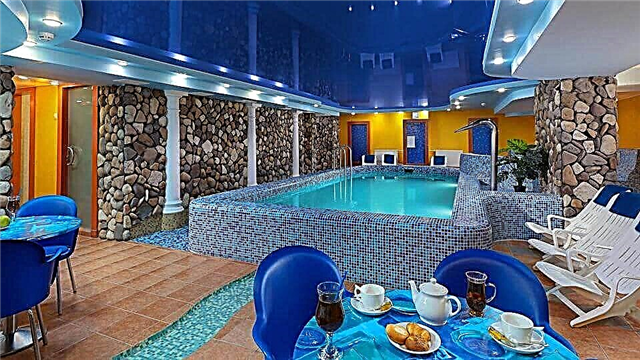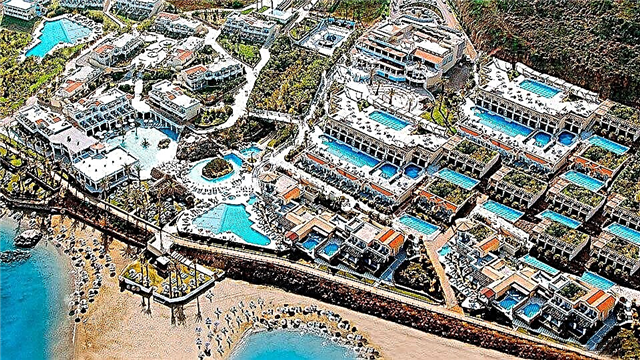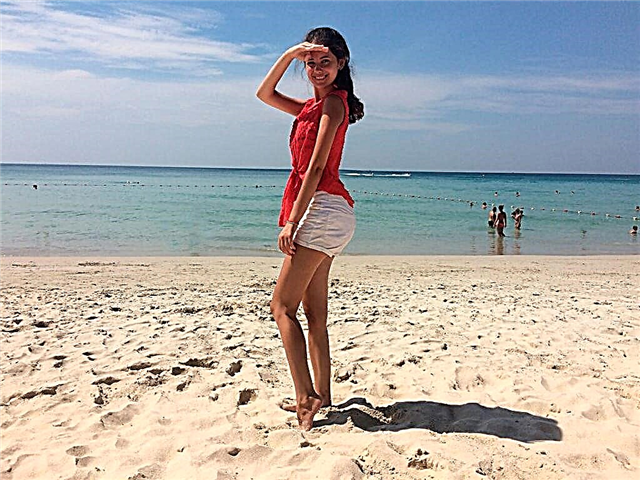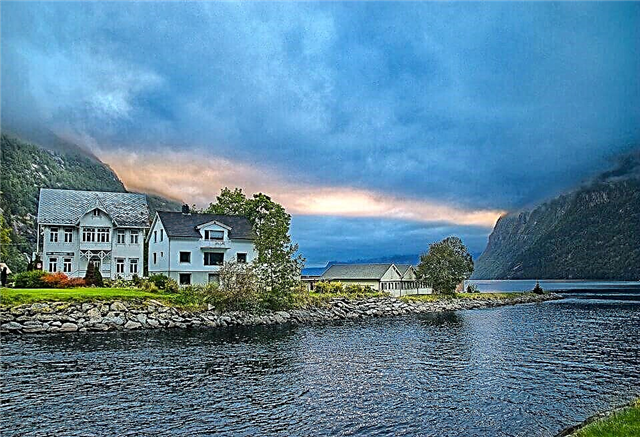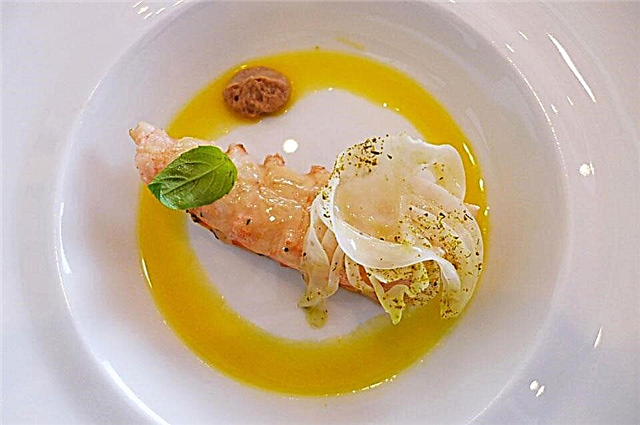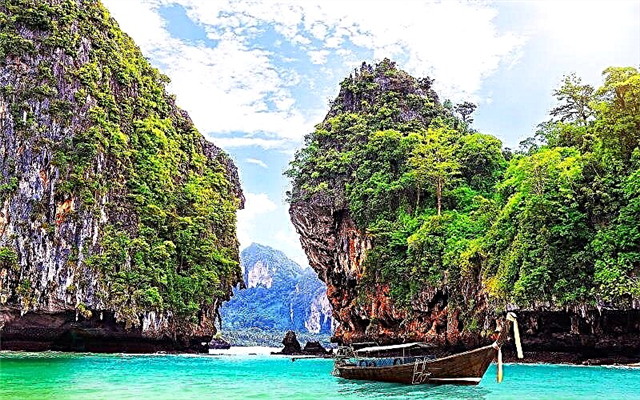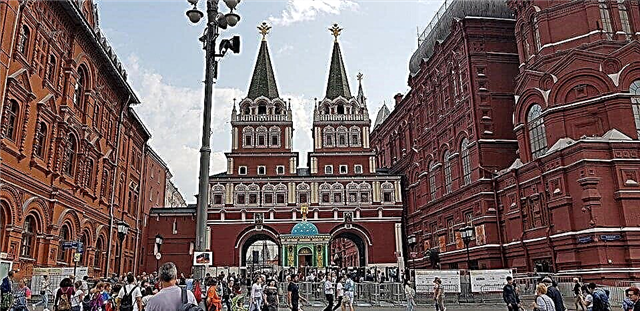People come to the capital for different purposes. For some it is a business trip, for others it is a visit to relatives or friends. But it is difficult to disagree with the statement that this city is so rich in attractions like no other.
You can see for yourself by coming here for a few days. Of course, during this time you will not be able to go around all the museums, see all the historical buildings, monuments, squares. But if you correctly plan the route, then a lot will open to your eyes. What to see in Moscow in 3 days on your own? We will talk about this further.
First day
The first day can be a "survey" dedicated to the most iconic places of the capital. You will walk along Red Square and the Alexander Garden, see the Kremlin, if you wish, you will look into Lenin's mausoleum, stand on the most famous squares of the capital. Let's hit the road!
The Red Square

It is from Red Square that many tourists begin to explore the city. And if earlier the Kremlin performed a protective function, today it is a living history, cultural heritage. Red Square is located on the left bank of the Moskva River, where guests can see the Kremlin walls and towers.
Some of them are active, the rest are simply an architectural monument. Residents of Russia see the Spasskaya Tower every New Year. The chimes placed on it strike midnight.
Visiting Red Square, you can see the Armory, which houses works of art and household items that were previously in the royal chambers.
Cathedrals of the Assumption, Annunciation, Arkhangelsk are the treasures of architecture. In the 15th century, the Church of the Position of the Robe of the Most Holy Theotokos was built. The famous Tsar Bell was cast in the 18th century. It weighs 202 tons. And even earlier, the Tsar Cannon appeared, glorifying the foundry craft with its one look.
Almost all guests try to capture the stunningly beautiful St. Basil's Cathedral, which is one of the main attractions of the city.
There is also a monument to Minin and Pozharsky, who played a major role in the formation of the militia and its battle with the Polish invaders. Execution Ground reminds of public executions, which could be seen by all Muscovites.
The queue still stretches to the Lenin Mausoleum. The body of the leader of the proletariat has been resting in the sarcophagus for many years - a kind of scientific experiment, such a long preservation of the mummy in an impeccable condition.
You can spend a lot of time exploring Red Square in detail. But we must hurry further.
Kremlin and Alexander Garden

The Alexander Garden is located in the Tverskoy district, stretches along the western Kremlin wall. It was founded in 1812 and covers an area of 10 hectares.
The garden is divided into Upper, Middle and Lower. Coming here, you can see the Kremlin's Kutafya tower, the Italian grotto, erected for the anniversary of the House of Romanovs obelisk. Once upon a time, the Neglinnaya River flowed here, with clean water, in which there were many fish.
Later, the river became polluted, its banks collapsed - then it was launched through the canal, and then through the tunnel. Osip Bove designed a garden that was supposed to appear near the Kremlin. It was dedicated to the victory in the Patriotic War, but it had not only a memorial function - people came here and have fun. In 1856, the modern name appeared - Alexander Garden.
In 2012-2016, there was a reconstruction - instead of old trees, new ones were planted, a rose garden appeared, lamps were installed, the old asphalt was replaced with new tiles. City events are often held here. The Tomb of the Unknown Soldier and the Eternal Flame are located in the Alexander Garden.
The Italian grotto, built in 1820 in the center of the Upper Garden, also attracts tourists. The material for it was stone cannonballs and fragments of the walls of Moscow houses destroyed by Napoleon's troops. In 1913, an obelisk was erected near the entrance to the garden, dedicated to the 300th anniversary of the reign of the House of Romanov. The fountains along the Manezhnaya Square are also very beautiful. They are decorated with sculptures by Zurab Tsereteli.
It must be remembered that the walls of the Kremlin were not always red. At first they were wooden, then they were made of white stone, and later they changed their color several times.
Both Russian and foreign architects took part in the construction. The teeth resemble the tail of a swallow, this is typical of Italian architecture. Previously, members of the royal family lived outside the walls of the Kremlin. Today, the President of Russia is working in the Senate Palace. And tourists come here to see the Diamond Fund, the Patriarch's Chambers and other architectural monuments.
Manezhnaya square
This is the name of this square since 1931, and for good reason - the facade of the Manege overlooks it. Manezhnaya is one of the largest squares in the Central District. Nearby are the Alexander Garden and the Kremlin, the State Historical Museum. In the 90s of the last century, the faithfully recreated Resurrection Gate and the Iverskaya Chapel reappeared here.
There is also the Museum of Archeology. The famous streets Manezhnaya, Tverskaya, Mokhovaya, Okhotny Ryad, in whose names you can feel the breath of the past, also depart from this square. A monument to Georgy Zhukov was erected here. He appeared at the Manezhnaya in honor of the 50th anniversary of the Victory.
On the dome of the Okhotny Ryad shopping center, you can see the sculpture of St. George the Victorious. It is also worth sitting on a bench and admiring the fountains.
Sofiyskaya embankment

This name was given to the embankment in honor of the Church of Sophia the Wisdom of God. Previously, it was called the Maurice Torez embankment.
The first Sophia temple has not survived, and the one that can be seen today was built at the end of the 17th century, its bell tower dates back to the second half of the 19th century. The embankment itself was built in the first half of the 19th century; its project was developed by N.I. Yanshin and A. Delvig.
In the first half of the 20th century, the embankment could have disappeared. One of the plans was to replace it with a large park. Several houses were demolished. But then it was decided to keep the embankment. In the 90s of the last century, there were new plans for the reconstruction of this place.
The area has lost a number of old buildings. Under pressure from the public, it was possible to preserve some of the houses associated with historical events and the names of great people. But the authorities from time to time have new proposals for the development of this site.
Bersenevskaya embankment

This embankment is located in the Central District in the Yakimanka area. There are various versions about its name.
According to one, the name came from the old word "bersen" (gooseberry), according to the other - from the grate with which the street was blocked from thieves, dashing people. They put such a grid on the order of the nobleman I.N.Bersen-Beklemishev.
In the middle of the 18th century, the embankment was reinforced with piles, and it turned out to be a real wide street. During a fire in 1812, the wooden houses that stood here were destroyed. Later, they began to build a confectionery factory, which today we know under the name "Red October".
In the 30s of the last century, the embankment was reconstructed. They were faced with granite, and gentle steps appeared here. At the beginning of the 21st century, the Patriarch Bridge was built.
Theatre square

Well, how can you come to Moscow and not stand near the Bolshoi Theater? This is where Teatralnaya Square is located. Moreover, the theater itself is only part of its ensemble, which was designed by Osip Bove and his assistants when the city was being rebuilt after the fire of 1812.
For many, the square located on the square becomes a place of pleasant respite - you can sit on a bench, listen to the noise of a fountain, eat ice cream. And move on.
Lubyanskaya square

In the 18th century, this area began to be called so by the name of the area.However, during the Soviet period it had a different name: Dzerzhinsky Square. In general, the word "Lubyanka" is associated with the Novgorodians who moved here at the end of the 15th century, after Novgorod was annexed to the Moscow principality. Novgorodskaya street was called Lubyanitsa.
Where the square is now, there was a gate, near which there was an active trade. In 1612, it was at this place that the militia fighters entered into battle with the Polish invaders. In the 18th century, there were earthen ramparts here - they feared an invasion of the Swedes.
There was also a water-folding fountain - from which residents could draw drinking water. At the beginning of the 20th century, active development of the territory adjacent to the square began. Since 1919, the Cheka has been located here. The Vladimir gate and the walls of Kitai-Gorod were demolished, the fountain was also destroyed.
In 1957, the now well-known Children's World was opened here. From 1958 to 1991, a monument to Dzerzhinsky could be seen on the square, which was then removed. In 1990, a monument to the Victims of Political Repression appeared. This is a simple stone brought from Solovki, where a terrible concentration camp was located.
Slavyanskaya square

Although people have lived in this place for a long time, Slavyanskaya Square is still young. Previously, it merged together with the square that is today named after the Barbarian Gate. And this large territory was called - Nogin Square. And the free space itself appeared here in the first half of the 19th century, when dilapidated and unnecessary buildings were demolished. In their place, the Vavarskaya Square was formed.
In the 19th century, for about 70 years, there was a water fountain and a well. The square began to acquire its modern look in the 20th century. Business courtyard and Kolchina's tenement house were built. In 1991, a monument to Cyril and Methodius, the Slavic enlighteners, was erected here, after which the square became known as Slavyanskaya.
Mosfilmovskaya street

Located in the Western District. There are streets nearby, whose names are also associated with cinema and outstanding figures of this genre - there are streets of Pudovkin, Pyryev, and there is also the 2nd Mosfilmovsky lane. The street got its current name in 1939, in honor of the film studio to which it led.
But the history of this place is remarkable. In the 17th century, the village of Golenishchevo-Kutuzovo was located here. The street ended near him and turned into a rural street. Construction began in the 40s of the last century. First, small houses appeared here, which were later demolished, and only in the 50s high-rise buildings began to be erected.
The street was extended to Lomonosovsky Prospekt, a trolleybus was launched along it. Starting from the 70s, embassies began to be built here. Here you can see the embassies: DPRK, Libya, Kuwait, Serbia, Malaysia, Nicaragua, Panama, Bosnia and Herzegovina, Germany, Sweden, Hungary, Bulgaria. North Korea.
The ancient temple of the Life-Giving Trinity has been preserved. There is also a house for the top generals. And, of course, the Mosfilm film studio is located here, the former film studio of the Sovkino factory.
Sparrow Hills

Another pleasant place to stay. At one time these mountains were called Lenin mountains. Muscovites walk here in the woods along specially laid ecological paths, sunbathe on the beach in summer, ride bicycles.
There is also the main building of Moscow State University - the Lomonosov University. There is a wonderful observation deck, which you can climb to admire the panorama of the city.
The famous Luzhniki stadium and the Moscow City complex make a special impression from above. You can get here without any problems by metro. Do not miss the opportunity to visit the legendary Sparrow Hills.
Poklonnaya mountain

Poklonnaya Gora is a gentle hill in the Western District. The eastern part of the hill was torn down in the middle of the last century, when Kutuzovsky Prospekt was under construction. In the 80-90s, Victory Park was laid out on Poklonnaya Hill.
This is a whole complex dedicated to the heroes of the Great Patriotic War. It is assumed that in the old days people who came to or left Moscow bowed to the city at this place, hence the name.
The mountain is already mentioned in the 14th century. Then there was a war between the Lithuanian and Moscow principalities. Here was the Smolensk road, here important persons were met and greeted. And at this place Napoleon waited for the "keys of the old Kremlin", assumed that the Russians would admit their defeat and surrender the capital to him.
As for Victory Park - back in 1942, a proposal was made to erect a monument here to the Red Army men leaving for the front, a competition for the best project was even announced, but then Stalin froze this idea.
The first work on the creation of the park began in 1961. In the 70-80s, funds were collected for the construction of the memorial complex, a significant amount was allocated by the state. There were many protesters against the construction of the complex, they demanded to preserve Poklonnaya Gora, but in 1987 the main part of the hill was torn down, and Poklonnaya Gora was moved inland.
The grand opening of the complex was timed to coincide with the Victory anniversary in 1995. There are not only monuments, but also the Church of St. George the Victorious, a synagogue, a mosque, and a Victory Museum.
Second day
The second day can be devoted to a walk around the city. Visit iconic places. Look at the Patriarch's Ponds, inextricably linked with Bulgakov's novel The Master and Margarita, visit the zoo, the planetarium, admire the most beautiful bridges ... Maybe not everything that was conceived can be realized - for example, you can spend a whole day only in the zoo. Still, it's worth trying to include as many objects as possible in your program.
Patriarch's Ponds

As the name suggests, there used to be several ponds here. But even earlier, there was a Goat Swamp on these lands (so called because the inhabitants of these places bred goats). In the 17th century, the residence of the patriarch Hermogenes was established here. And at the end of the century, Patriarch Nikon ordered to dig three ponds on the site of the swamp and breed fish in them. When the patriarchate was abolished, the abandoned ponds began to swamp again.
When the city was rebuilt after the fire of 1812, only the largest of the three ponds was preserved, the rest were filled up. At the end of the 19th century, the pond was cleaned and filled with fresh water.
During the years of Soviet power, the place was called Pionerskiye Ponds, the former name was returned only in 1992. In the late 90s, the idea was born to erect a monument to Bulgakov on the Patriarchs.
It was supposed to be a whole sculptural group - the writer himself, Yeshua and other heroes of the famous novel. There should have been a fountain in the form of a primus. But public opinion did not allow this idea to come true.
In 2015, the reconstruction was carried out - parking near the sidewalks was removed, the sidewalks themselves were expanded, the traffic became one-way. In 2017, a reading room appeared at the Patriarch's. Here in the open air you can settle down with a book or exchange literature with someone.
In the center "House on Patriarchs" people gather again to play chess. In general, Muscovites love this place very much and come here to relax by the beautiful reservoir. Many famous people have lived in the vicinity over the years. These are Vladimir Mayakovsky and Lyudmila Gurchenko, Marina Tsvetaeva and Isabella Yurieva and others.
Moscow planetarium

It was decided to build a planetarium in the capital in the 1920s. For this purpose, it was possible to use the "Planetarium" projection apparatus, which for those times was considered super modern. There were negotiations with Germany - the Germans shared their experience, told how they built their "star halls". In the USSR, another name was in use - "optical scientific theater".
The architects were M. Barshch and M. Sinyavsky. There was an idea to put the building of the astronomical museum next to it, but it did not come true. The planetarium opened in November 1929. Soon a circle for schoolchildren began to work with him. And in 1947 an astronomical site was opened here. In 1977, a new apparatus made in the GDR appeared here instead of the old one.Now not only lectures were held here, it was also possible to watch audio-visual programs.
Future famous astronomers were engaged in a circle for schoolchildren. Among the lecturers were Yuri Gagarin, Konstantin Paustovsky, Thor Heyerdahl and other celebrities. Future cosmonauts were also trained here.
Even the Fantastic Theater functioned here - you could watch plays based on the works of great science fiction writers. The observatory was opened. Guests of the planetarium could look through the largest telescope in the city.
In 1994, the planetarium was closed. Difficult 90s, privatization also affected his fate. Reconstruction took place in the early 2000s. The building was raised a few meters, new towers were erected, which housed observatories, and the area of the museum was expanded.
A new projection system was purchased. The planetarium was curated by Moscow State University. Today there is a Small Star Hall, a 4D cinema, the Lunarium Museum and much more. The planetarium is definitely worth a visit.
Zoo

This is one of the oldest zoos in Europe. In 1864, a small zoo was opened in the city. The place was chosen exactly where Muscovites liked to walk - Presnenskie ponds.
At first, 134 domestic animals and 153 wild animals lived here, as well as several reptiles. Basically, these were the representatives of the animal world who live on the territory of our country. But lions and tigers, rhino, crocodile also settled here.
Guests could look at the best breeds of farm animals, and breeding work was carried out here. Members of the imperial family and famous people made donations to the zoo, gave rare animals. For example, the Indian elephant, the zebra. In 1927, the New Territory was opened, now the animals were kept in enclosures. Educational work was going on, the Club of Young Biologists was operating.
The employees showed real heroism during the Great Patriotic War, striving, by all means, to keep all their pets alive. During the war years, the zoo was visited by more than 6 million people.
In the 70s and 80s, the buildings of the zoo were dilapidated, often there was nothing to feed the animals.
In the 90s, reconstruction began - new facilities were erected, communications were updated. The expositions were solemnly opened in 1997, to mark the 850th anniversary of Moscow. Now to come here means to get into the real kingdom of animals and birds. It contains over 8 thousand inhabitants.
It is possible to recommend that you familiarize yourself with the zoo website before visiting. There is even such a function as a "virtual tour". You will decide in advance which of the animals you want to see in the first place, you will receive a lot of interesting information about the inhabitants.
It is also possible to come to a certain time - for example, when the animals are fed. Or when the next event starts. Lectures are often held here, there is a contact zoo.
Since you can walk around the territory for a long time, there are places where ice cream, drinks, cotton candy and other delicacies are sold.
Moscow House of Books

The Moscow House of Books was opened in September 1967. It became the largest in the country. In 1998, the United Center "Moscow House of Books" was formed, which included other bookstores in the city.
Many famous people came here, and not only residents of Russia, but also guests from abroad. For example, Michael Jackson visited the House of Books.
Now the Moscow House of Books unites over 20 stores, including an online store. In total, about 300 thousand titles of books are sold here, among them there are antique ones. Here you can also buy stamps, collectible coins, stationery, souvenirs and much more.
Dozens of events are held here every month, and it will be good luck if you are lucky enough to attend one of them. Here they organize meetings with popular writers, give lectures, hold musical evenings, and play whole performances for children.
MDK is the initiator of well-known children's festivals, such as “We Grow Together with the Book”. The number of buyers reaches approximately 7 million per year.
Cathedral of Christ the Savior

The construction of such a temple was planned after the victory in the war of 1812. According to the manifesto of Emperor Alexander the First, the decision was made, and in 1817 a stone was solemnly laid on the Sparrow Hills. But it was not possible to build a church here - the soil turned out to be fragile, streams flowed under it.
In 1832, Nikolai the First approved a new project - the construction was supposed to be near the Kremlin, on the banks of the Moskva River. The architect was Konstantin Ton. The foundation of the Cathedral of Christ the Savior was laid in 1839, and it was built for almost 44 years. Its height exceeded 100 m, the thickness of the walls was about 3.2 m.
The Museum of the War of 1812 was also located here. The temple was painted by great artists - Surikov, Makovsky and others. In 1883 the temple was consecrated. A wonderful choir sang here. A monument to Alexander III was erected in the park next door. Coronations were held in the temple, the largest holidays were celebrated - for example, the centenary of the war of 1812.
In 1917, Patriarch Tikhon was elected at the Local Cathedral, which gathered in this church, in 1931 the church was closed and soon blown up. It was planned that in its place would be the Palace of the Soviets, but it was never built. Instead, a swimming pool "Moscow" appeared here.
In 1994, it was decided to recreate the lost Cathedral of Christ the Savior as accurately as possible. It was built for 6 years, the work was finally completed in 2000. Consecration took place on August 19, the day of the feast of the Transfiguration.
The chief architect was Mikhail Posokhin. Masters from the Russian Academy of Arts worked on the paintings. The bells were cast at the Likhachev Plant. Now it is the largest cathedral in our country, at the same time there can be 10 thousand people.
A particle of Christ's robe is kept here, as well as other shrines. It is here that the patriarch celebrates the Easter service.
Patriarshy Bridge

The construction of the bridge began in 2002 and was opened in 2004. Mikhail Posokhin became the architect, and Zurab Tsereteli became the artist. At first, the bridge connected the Cathedral of Christ the Savior and the Bersenevskaya embankment. He received the name "Patriarch" in 2005 - in honor of His Holiness Patriarch Alexy II.
A year later, it was decided to extend the bridge to Bolshaya Yakimanka Street. This was done by the fall of 2007. Later, an elevator appeared where the descent to the Bersenevskaya embankment is carried out. It was on this bridge that President Dmitry Medvedev wrote down his addresses to the people for the New Year.
From here it is very convenient to admire the Kremlin, the Cathedral of Christ the Savior, the monument to Peter the Great and other attractions. Near the bridge there are moorings where pleasure boats stop.
The Patriarch's length is 203 m, it was built in the style of 19th century bridges. In the evening and at night, two hundred lamps are lit here, as well as spotlights and LEDs. There is an automatic change of colors - the bridge lights up green, then blue, then red or purple - this is a very beautiful sight.
Park of Arts "Muzeon"

It is located on the embankment of the Moskva River, next to the Crimean shaft. This is a real open-air sculpture museum. Here you can see 8 hundred works. And the most different. These are sculptures of leaders, monuments to Heroes of Labor, and works of avant-garde artists. You can walk, approach, watch, take pictures.
Since 2015, Muzeon has been part of Gorky Park. In 1970, the buildings on this site were demolished. Here they began to erect a new building of the Tretyakov Gallery and the House of Artists.
In the adjacent territories, the artists created a park. In particular, here you can see the monuments of the Soviet era, which were dismantled in the 90s of the last century. There are statues by Yevgeny Vuchetich, Vera Mukhina and other famous sculptors.
The new museum was officially established in 1992. There is a section dedicated to the Stalinist repressions, and modern sculpture is also presented.Scientific symposia are held on the basis of the museum, in which sculptors from different countries take part.
While walking, you can see the monument to Joseph Stalin - a smaller copy of the one that stood on the Moscow Canal. And next to it is the composition "Victims of the Totalitarian Regime". Another composition "We Demand Peace" was performed by Vera Mukhina. Guests love Grandfather Mazai and the Hares, Don Quixote and other sculptures. The collection of the museum is expanding.
Park of Culture and Rest named after M. Gorky

It will be a pleasure to end the second day in this wonderful park. He has a long history. In the early 20s of the last century, the All-Russian Agricultural Exhibition was held here. In 1928, by decision of the Presidium of the Moscow City Council, it was decided to set up a park here.
It was planned that it would become a place for the propaganda of Soviet culture. The name of Gorky was given in 1932. The recreation area was designed by El Lissitzky and Alexander Vlasov - albeit at different times.
Soon a fountain appeared here - it is a kind of center of the park, paths depart from it. At the end of the 30s of the last century, the territory around the Golitsyn pond was formed. The arch of the main entrance appeared in 1955. The park delighted children with the railway, which was ridden by a train of 3 carriages.
The adults admired the sculptures, especially The Girl with the Paddle. In 2011, specialists began to restore the park. He recently turned 90 years old. The area is almost 220 hectares. It includes Sparrow Hills, Neskuchny Garden and Muzeon.
The third day
Now that you have already seen a lot, you can relax a little - wander around the famous VDNKh exhibition, through the most beautiful parks, look at the futuristic Moscow City complex. It doesn’t matter if you don’t manage to visit everywhere. This will be an excellent reason to come to the capital again.
VDNKh

In Soviet times, it was considered a big omission to come to Moscow and not visit VDNKh. The exhibition made a tremendous impression. Here one could get acquainted with the best products of all republics, the achievements of agriculture and industry. Today it is also very interesting. It should only be borne in mind that the territory of VDNKh is huge.
If you have a small child with you, it will be easier for him to travel in a stroller. For adults, roller skates or a bicycle will be the way out - all this can be rented at the entrance. It is especially good here in summer - magnificent fountains fascinate with their beauty. If you are tired, you can sit, sit down ice cream.
What to watch? It is here that Mukhina's sculpture "Worker and Collective Farm Woman" is located, there are also other monuments of the Soviet period. There are countless pavilions. There are museums and exhibitions in them - you can choose those that match your interests.
Look at the huge model of the city, visit the "Moskvarium" - this is an oceanarium where not only various inhabitants of the sea live, but also bright shows are held. Both adults and children will be interested in the Museum of Cosmonautics.
Here are exhibited stuffed animals of the very same Belka and Strelka - dogs that have been in space and returned safely to Earth, the clothes of astronauts are presented, and a spaceship is also available for review. Tubes of food will become funny souvenirs, such astronauts take with them on the flight.
Ostankino Tower

To visit the Ostankino TV tower, you need to get off at the same VDNKh metro station. The television center on Shabolovka was built in the mid-30s of the last century. He began regular work in 1939.
The broadcasts could be watched by all residents of the region, but over the years it became clear that the capacity was still lacking. And it was decided to build a multi-program center with a large number of studios. The competition was won by the Kiev Design Institute, which took the Eiffel Tower as a model.
But another specialist, Nikolai Nikitin, suggested building a concrete tower. The final project was approved in 1963. The architects gave the tower a rocket-like appearance. At one time Ostankinskaya was the tallest building in the world.
Among other things, a restaurant and a meteorological complex appeared here. In 2000, there was a major fire here - cables flared up. The extinguishing was very difficult - thousands of people, hundreds of pieces of equipment, and helicopters were involved in it.
Several people died in the collapse of the elevators. The Seventh Heaven restaurant was completely restored only after 16 years. Today any visitor of the city can admire the Ostankino TV tower. Its height is 540 m.
The observation deck is located at 337m, a wonderful view opens up from here. The Seventh Heaven restaurant has three floors. They all rotate, so you can drink coffee and admire the metropolis from above.
Kremlin in Izmailovo

The Kremlin in Izmailovo is a whole cultural and entertainment complex, and you can stay here for a long time too. Unusual museums, including an interactive one, and exhibitions await you. In the 16th and 17th centuries, there was a royal prison - arable land and manufactories.
After the revolution, everything was abandoned, the church there was blown up. Only a few buildings from the 17th century have survived. In 1974, an exhibition of artists who presented works in the style of avant-garde was held here. On the eve of the 1980 Olympics, they wanted to build a hotel here.
The project for the construction of a wooden Kremlin was proposed in 1998 by Alexander Ushakov. Soon a temple in honor of Nicholas the Wonderworker was built in Izmailovo. The exhibitions that opened in 2003 did not last long - two years later there was a major fire. They began to restore what was lost.
Most recently, the Moskomarkhitektura wanted to build up this area, demolishing the Izmailovsky opening day, but the center has been defended so far. But in the summer of 2019, a fire broke out here again, which was hardly extinguished.
The museums that function in Izmailovo are located in both old and modern buildings. Guests of the cultural and entertainment center can get acquainted with the history of the Russian fleet, with the development of vodka production, and trace the evolution of Russian toys.
The Museum of Bread is also interesting - the guide will tell you about different methods of making bread, rolls, buns. There is also a Museum, where plasticine figures are exhibited, and even a Museum of ill-bred children - here children can draw on walls or fences, shoot with a slingshot, and come up with other entertainments.
Izmailovo Natural and Historical Park

This is one of the largest parks in Europe, with an area of over 1608 hectares. Once there was the estate of Ivan the Terrible, then the boyar estate, then the estate of Tsar Alexei Romanov. During his reign, several ponds were formed on the Serebryanka River. An island appeared where the palace was erected.
The Pokrovsky Cathedral of the 17th century has survived to this day. Under the king, there were gardens and fields, hunting grounds and numerous ponds. Rare species of flowers and trees were planted. Under Peter I, amusing games were held here.
Anna Ioanovna also loved Izmailovo, kept a menagerie here. Later, an exemplary apiary appeared here. In the 19th century, forest crops were planted. In the 30s of the 20th century, a Park of Culture and Rest appeared in Izmailovo, it was named after Stalin. There were: a parachute tower, a cinema and a theater. There were plans to build a huge reservoir here. In the 50s it became an ordinary walking area.
A Ferris wheel was installed here. Since then, the infrastructure has been developing.
In winter, you can go ice skating, skiing and sledging, slide down the hill. In summer, there are numerous attractions, you can rent a bicycle, boat, ride a horse.
Park "Krasnaya Presnya"

It is located in the Presnensky District and is a historical and cultural monument. It has survived from the Studenets estate, the name of which comes from the stream of the same name. The lands once belonged to the princes Gagarin, and then to their relatives. After that, they passed from hand to hand, at the beginning of the 19th century, their owner was the Governor-General A.A. Zakrevsky.
During his reign, a beautiful house and monuments to the heroes of the war of 1812 appeared here. The park was created in 1932.Today, the Dutch ponds, the Octagon fountain, the linden alley, the remains of a column have survived from the old days. But this place is very popular.
Various competitions and events are held here. There are playgrounds for children, adults can work out on simulators, play tennis, rent a bicycle.
Moscow City

To get here, you have to get off at the Vystavochnaya metro station. The business center of the metropolis is located here. The Moscow City area looks ultra-modern. Skyscrapers reach 96 floors; tens of thousands of specialists from different countries of the world work in these huge buildings. The Empire Tower is worth a visit. If you go out to the observation deck, a stunning panoramic view opens up in front of you.
Moscow is a city where historical buildings are organically combined with buildings that seem to have come from the future. It's worth looking at. And after enjoying the capital, do not miss the opportunity to come here again.

